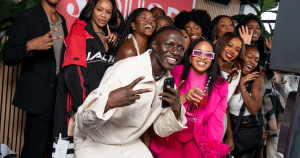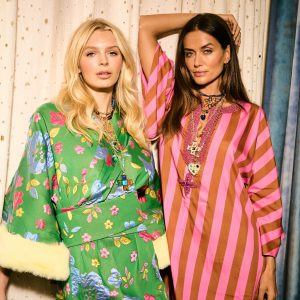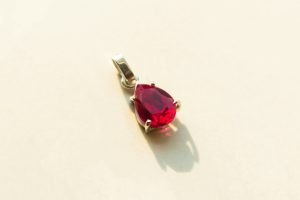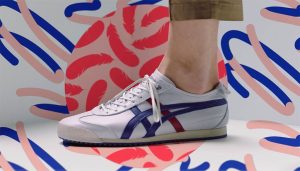What began as a practical solution for fitness enthusiasts has evolved into a cultural phenomenon that merges functionality, comfort and style. Here’s how athleisure became a mainstay in modern wardrobes.

What began as a practical solution for fitness enthusiasts now merges functionality, comfort and style. Image: Under Armour
Whether it’s a pair of tailored joggers worn with a blazer at the workplace or sportswear on the Dior Spring Summer 2025 runway, athleisure has blurred the boundaries of traditional fashion categories, carving a lasting niche in the industry.
The rise of athleisure is rooted in its versatility—clothing that transitions between athletic performance and everyday activities. This versatility has been further amplified by collaborations between fashion and activewear brands or athletes, as well as the growing focus on sustainable design.
What makes athleisure significant is how it reflects broader societal changes. The pandemic accelerated the demand for clothing that combines comfort, style and adaptability, and athleisure filled this gap perfectly. Its widespread adoption has been driven by strategic partnerships, like Balenciaga’s collaboration with Under Armour, which brings luxury aesthetics to functional fitness apparel, and Prada’s Re-Nylon collection with Adidas, which reimagines athletic wear through a sustainable lens.
Today activewear is stronger than ever and is one of the most prominent illustrations of the sport-fashion overlap. Per Precedence Research, “The global athleisure market size was valued at USD 394.24 billion in 2023 and is expected to reach around USD 1,069.84 billion by 2034, expanding at a CAGR of 9.5 per cent from 2024 to 2034.” Let’s take a look at how it became a mainstay in the modern wardrobe.
The Evolution of Athleisure: From Gym to Mainstream Fashion

Michael Kors
Athleisure started as a niche trend among fitness enthusiasts but gained traction as fashion designers introduced stylish, versatile activewear. Designer Norma Kamali was among the pioneers to bring workout-inspired pieces, such as sweatshirts and leggings, to high fashion in the Eighties. However, the first notable collaboration between an activewear brand and a fashion designer was in 2003 when Stella McCartney partnered with Adidas to create a high-end line of performance and lifestyle apparel.
These milestones contributed significantly to the evolution of athleisure, making it a staple in high fashion and everyday wear, and set the stage for further collaborations. Balenciaga partnered with Under Armour for Balenciaga Cruise 2025, where tracksuits, hoodies and sweat shorts have the Balenciaga aesthetic and silhouettes, and the Under Armour logo. Inspired by tennis culture, Michael Kors x Ellesse is a spin on activewear i.e. relaxed silhouettes and crop fits in warm, saturated hues reminiscent of vintage fashion.
For the partnership between LVMH and the Olympic and Paralympic Games Paris 2024, Berluti devoted months to designing a tuxedo-inspired outfit and shoes. “With this outfit, we have sought to honour French elegance and to serve French athletes and coaches,” Jean-Marc Mansvelt, CEO of Berluti, said on lvmh.com
Miuccia Prada implemented nylon into her designs back in 1984—a fusion between luxury and activewear. Fast forward four decades, and Prada’s collaboration with sportswear giant Adidas continues to push the boundaries of functionality within fashion. Falling under the brand’s sustainable Re-Nylon line, the collection sees tracksuits and messenger side bags made from recycled nylon.
Gucci also collaborated with Adidas to tap into the authenticity of hip hop, street culture, and sports. Classic athleisure silhouettes saw playful colour-blocking and a nod to vintage logomania and flared bottoms. Stemming from Kim Jones’ love for sneakers, Dior x Air Jordan made headlines in 2020 as ‘the most-wanted trainers of all time’. The white and gray, calf leather hi-tops took a leaf from the different cultures of haute couture and high-performance sportswear to create collaborative, limited-edition footwear.
Athletes and fashion endorsements

Faith Kipyegon is the only runner to win three back-to-back gold medals in the 1,500m. Image: Nike
In recent years, athletes have become a powerful marketing tool for fashion brands. As athletes attract a diverse and often younger demographic, they bridge the gap between sports and luxury fashion, making fashion labels more accessible to a wider demographic. The most illustrious example is Michael Jordan’s reported $2.5 million deal with Nike in 1984, which catapulted Nike into the world’s largest athletic apparel company and Michael Jordan into a global, cultural phenomenon.
Louis Vuitton’s new campaign features tennis stars Roger Federer and Rafael Nadal who illustrate how a personal journey can reach heights when pursued with passion and determination. In 2022, the luxury brand had launched a campaign starring football stars Lionel Messi and Cristiano Ronaldo. Titled ‘Victory Is a State of Mind’, the campaign made its debut ahead of the opening day of the FIFA World Cup in Qatar.
German runner Alica Schmidt collaborated with BOSS for a capsule collection titled BOSS x Alica Schmidt. Designed in collaboration with the athlete, it captures shared values including drive, determination, and aesthetic. And, the BOSS Global Campaigns for Spring Summer and Fall Winter 2022 shares her perspective on what it means to #BeYourOwnBOSS.
Limited editions sell out quickly. Japanese-Haitian athlete Naomi Osaka’s collection with Louis Vuitton broadened the luxury fashion brand’s appeal, emphasising diversity in fashion. The campaign featured Osaka’s preferences, inspirations and designs, adding emotional value to the collection, making it more than just a product—it became a narrative that buyers wanted to be a part of.
Tennis player Roger Federer’s endorsement of Uniqlo helped the Japanese brand to penetrate markets beyond Asia, especially in Europe and North America, where Federer has a massive fanbase. Additionally, Federer’s long-term deal underscored Uniqlo’s commitment to quality and innovation, aligning its LifeWear philosophy with his timeless appeal and professional consistency. The collaboration also generated extensive media coverage and social media buzz, solidifying Uniqlo’s status as a global lifestyle brand.
Why Athleisure Works: Comfort Meets Versatility

Adidas X Gucci
In the post-pandemic world, athleisure has emerged as more than a fashion trend—it has become a lifestyle staple. The global shift to remote work during the pandemic blurred the lines between professional and personal spaces, creating a demand for apparel that is both functional and stylish. Athleisure fits perfectly into this new normal, combining comfort, flexibility, and style.
Collaborations such as Lululemon x Mirror’s fitness-meets-fashion approach or Adidas’ partnership with Beyoncé’s Ivy Park have elevated the category by combining performance-driven designs with modern design aesthetics. These campaigns illustrate how athleisure responds to modern consumers’ needs for apparel that transitions from a home workout to a work- from- home set-up.
Tech giants like Google and Meta have adopted relaxed dress codes, empowering employees to trade stiff suits for yoga pants or track jackets. Additionally, public figures like Gigi Hadid and Timothée Chalamet have been spotted sporting athleisure while running errands or attending events, reinforcing the idea that this style is practical and socially accepted. Brands like Nike have also tapped into the “work-from-anywhere” culture with campaigns like “You Can’t Stop Us,” which showcase athleisure as a tool for motivation and confidence, regardless of whether you’re working out or simply working.
Athleisure’s appeal also lies in its ability to align with wellness trends. For example, the collaboration between Puma and wellness entrepreneur Cara Delevingne highlights the connection between mental health, physical activity, and personal style. Additionally, many brands are now incorporating sustainable materials, such as Reebok’s plant-based shoes and Girlfriend Collective’s recycled collections. These initiatives show how athleisure has evolved into a category that goes beyond clothing—it’s a cultural movement. By bridging comfort, functionality and sustainability, athleisure has cemented itself as the post-pandemic wardrobe essential, offering adaptability in an unpredictable world.
Athleisure: What’s Next?
The intersection of technology and fashion is ushering in a new era of innovation. Smart fabrics—textiles embedded with technology—monitor health metrics, adapt to environmental conditions, or even enhance performance. A standout example is the collaboration between Levi’s and Google on the Commuter Trucker Jacket, which integrates Google’s Jacquard technology into denim, allowing wearers to control music, receive calls, or navigate with gestures. This combination of style and utility exemplifies how smart fabrics are redefining what clothing can do, appealing to tech-savvy consumers.
Campaigns by sportswear brands highlight how smart fabrics are gaining traction. Under Armour’s UA RUSH training line is embedded with infrared technology, a technology that pushes energy back to the body and improves oxygen flow and circulation, recycling the body’s energy. Meanwhile, Nike’s Adapt BB shoes use self-lacing technology controlled through a smartphone app, demonstrating how wearable tech can combine convenience and cutting-edge design. These advancements are about functionality and enhancing the overall consumer experience, making smart fabrics a key driver in the future of fashion.
Smart fabrics also offer potential solutions to environmental challenges. Textile innovation companies like PANGAIA are creating bio-engineered fabrics infused with seaweed or peppermint oil to reduce waste and prolong garment life. Similarly, Ralph Lauren‘s Polo Shirt with built-in cooling technology, unveiled during the U.S. Open, demonstrates how brands are addressing climate-adaptive clothing needs. As technology continues to evolve, we can expect smart fabrics to transform fashion into a more dynamic, responsive, and eco-conscious industry, paving the way for a seamless blend of function and style.
How to integrate Athleisure into our wardrobe

Image: Ralph Lauren
What is athleisure, and how is it different from regular activewear?
Athleisure combines the performance of activewear with everyday fashion, making it suitable for both exercise and casual outings.
What are the must-have athleisure staples?
Key staples include leggings, joggers, sports bras, oversized hoodies, and sneakers.
Can athleisure be styled for the workplace?
Yes! Pair tailored joggers with a structured blazer or opt for a monochrome look with sleek sneakers for a polished appearance.
How do you accessorise athleisure outfits?
Add minimalist jewellery, trendy caps, or a crossbody bag to enhance your look.
What colours work best for athleisure?
Neutral tones like black, grey, and white are versatile, but bold colours and patterns make a statement.
Is athleisure only for casual settings?
Not at all! Many brands offer elevated athleisure pieces that suit semi-formal or even formal occasions.
How can I layer athleisure for colder weather?
Layer with bomber jackets, trench coats, or oversized sweaters for a chic winter-ready outfit.
Are there eco-friendly options in athleisure?
Yes, many brands focus on sustainable fabrics like organic cotton or recycled polyester.
Can older generations embrace athleisure?
Absolutely! Athleisure’s comfort and simplicity make it ideal for all age groups.
What footwear pairs best with athleisure outfits?
Sneakers are a classic choice, but you can also experiment with slip-ons or boots for a modern twist.
Conclusion: Why Athleisure Is Here to Stay
Athleisure is more than a fashion trend—it’s a modern lifestyle. Its ability to adapt to changing needs prioritise comfort and maintain style, making it indispensable in modern wardrobes. Whether we’re fitness enthusiasts or someone who values elegance, athleisure offers something for everyone.
Jasmeen Dugal is Associate Editor at FashionABC, contributing her insights on fashion, technology, and sustainability. She brings with herself more than two decades of editorial experience, working for national newspapers and luxury magazines in India.
Jasmeen Dugal has worked with exchange4media as a senior writer contributing articles on the country’s advertising and marketing movements, and then with Condenast India as Net Editor where she helmed Vogue India’s official website in terms of design, layout and daily content. Besides this, she is also an entrepreneur running her own luxury portal, Explosivefashion, which highlights the latest in luxury fashion and hospitality.











